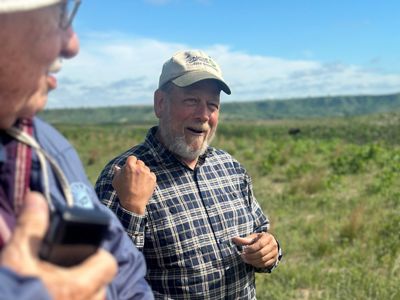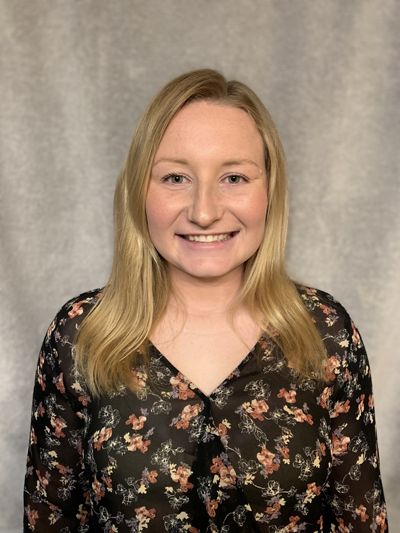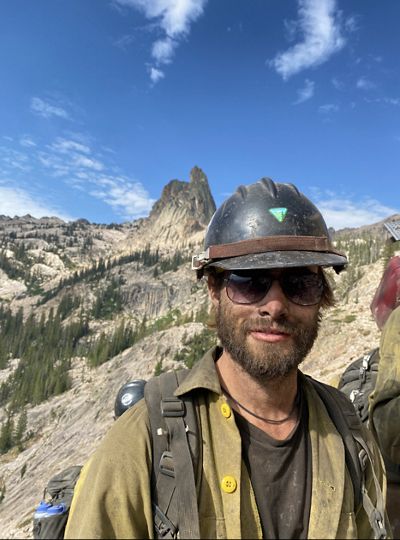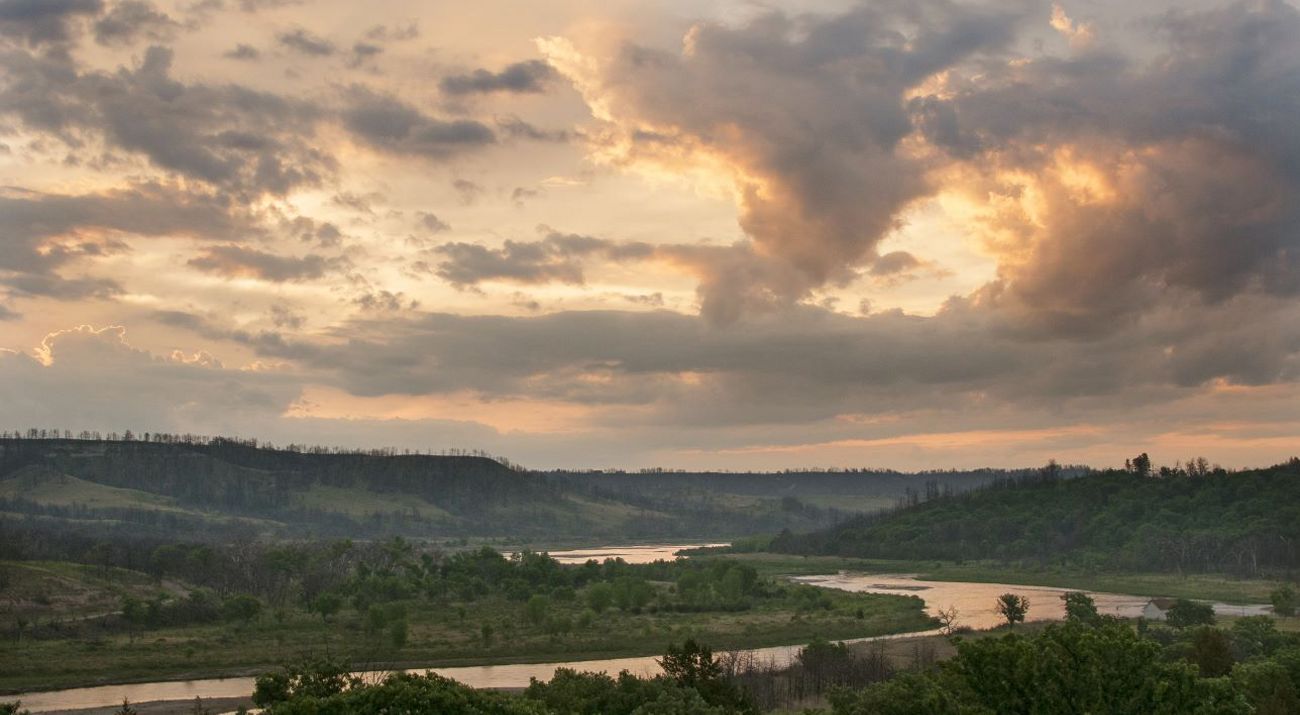New Faces at Niobrara Valley Preserve
We’ve recently hired four new staff members at the beloved Niobrara Valley Preserve, and we are so excited for you to meet them.
We’ve recently hired four new staff members at the beloved Niobrara Valley Preserve, and we are so excited for you to meet them.

David Crites, Niobrara Valley Program Manager
When did you first become involved with The Nature Conservancy?
I started by volunteering at Nachusa Grasslands in Illinois and later joined the staff in bringing the bison there. I did fence and corral work and really enjoyed it. It was there that I fell in love with working with bison. In ’19, I left Illinois and joined the Turner organization at Fawn Lake Ranch in Nebras. I loved my time with Turner, but I’m glad to return to TNC.
Where did you go to school, and what did you study?
I studied forestry at Southern Illinois University in Carbondale.
When people ask you what you do, how do you describe it?
I work with bison to restore the landscape and help remove roadblocks for the staff out here.
Have there been any surprises about NVP?
When I joined the staff, I knew how many acres the Preserve was (56,000 acres) …but the scope of the place and the diversity of the ecotypes surprised me the most. I like that.
How do you like to experience nature the best?
I fish a lot. I love backpacking, kayaking, and canoeing. In 2011, I hiked the Appalachian Trail with my daughter. That was really neat. We were out there for 150 days and did the whole trail.

Ben Kusiak, Land Steward
Where did you go to school?
I have a B.S. in Environmental Studies with an emphasis in Biodiversity and Environmental Restoration from Northern Illinois University in DeKalb.
Where were you before you came to TNC?
I interned at Richardson Wildlife Foundation, assisting with Blanding’s turtle research, where I got acquainted with The Nature Conservancy. Once I graduated, I got a job at TNC’s Kankakee Sands as an assistant land steward, working with native seed, fighting invasives, and prescribed fire on a two-year assignment. From there, I started at the Niobrara Valley Preserve.
What do you like about this work?
I like learning what’s best and doing what’s best for biodiversity. In my past experience, harvesting seed to go into a new restoration has been joyful and gratifying. It’s really a long-term investment. I’m excited to go back to Kankakee Sands to see how the work I’ve done has evolved.
Why TNC?
Everyone who works for TNC is motivated by their passions, and there is a shared urgency to address the biodiversity and climate crises. I enjoy the feeling of doing good for nature. I feel extremely lucky to have worked at Kankakee Sands and now the Niobrara Valley Preserve.
What does a typical day look like?
It changes with the season. Lately, we’ve been working on fencing projects… we just tore out some bison fence that fell into the river, which made for an interesting day!
What is your preferred way to be in nature?
Mostly hiking. In February and March, I hiked a lot of the spring branches, which was a cool way to see the Preserve and the super interesting seeps. I’m also motivated to find cool plants. I recently got to tag along with some mushroom researchers, and I learned a lot. They were excited about what we found, and they plan to return.

Katelyn Glause, Community Outreach Specialist
What did you study?
My undergraduate degree is in biological sciences from UNL, and I'm finishing my master's next month (natural resource sciences specializing in hydrological sciences).
Tell me about your new role.
I am the Community Outreach Specialist for the Niobrara Valley Preserve. I help researchers and other guests who visit; I lead bison tours, and I'm organizing and compiling research projects from over the past few years. It's been fun discovering the area. Last week, I got to help with butterfly surveys.
How do you like to experience nature the best?
I really like to be immersed in it, listening to bird calls, observing what's around me. I also like reading research.
Why TNC?
I like that we are working toward conservation, improving ecosystems, and interacting with people. TNC's values align with mine.
Any surprises or highlights?
I finally saw pronghorn! I was so excited.

Ethan Osnes, Prescribed Fire Specialist
When you tell people about your new role at TNC, how do you describe it?
I mostly help landowners who want to burn their property but don’t know where to start.
Where did you go to school?
I went to school in McCook, Nebraska for fire science.
What were you before you came to TNC?
I have worked in wildland fire for the state of South Dakota wildland fire, for the Fish & Wildlife Service, and the Bureau of Land Management.
Do you miss the travel?
Yes and no. I don’t miss sleeping on the ground or ten-minute wakeups! I grew up in Valentine, and it was time to get closer to home and family.
How do you like to experience nature the best?
I do a lot of hiking. I haven’t fished for a while, but I’m getting back into that – I’d like to get back into hunting as well. I like trail running, biking… I really like working in nature, too.
How are you spending your days while the burn window is closed?
Right now, we’re in the planning process for next year. I’ve done some landowner visits and am working on what we need to do with them... we are getting the wheels turning for next season.
It seems like the culture around fire in the Sandhills has changed so much in twenty years.
Yes, overall, people are seeing what happens when fire is excluded from the landscape. The biggest thing people worry about is the escapes, and Chad (Bladow, Prescribed Fire Program Manager) puts them at ease. It has a lot to do with Chad's ability to meet with people and explain what we do.
The Nature Conservancy is a global conservation organization dedicated to conserving the lands and waters on which all life depends. Guided by science, we create innovative, on-the-ground solutions to our world’s toughest challenges so that nature and people can thrive together. We are tackling climate change, conserving lands, waters and oceans at an unprecedented scale, providing food and water sustainably and helping make cities more sustainable. The Nature Conservancy is working to make a lasting difference around the world in 81 countries and territories (40 by direct conservation impact and 41 through partners) through a collaborative approach that engages local communities, governments, the private sector, and other partners. To learn more, visit nature.org or follow @nature_press on X.



